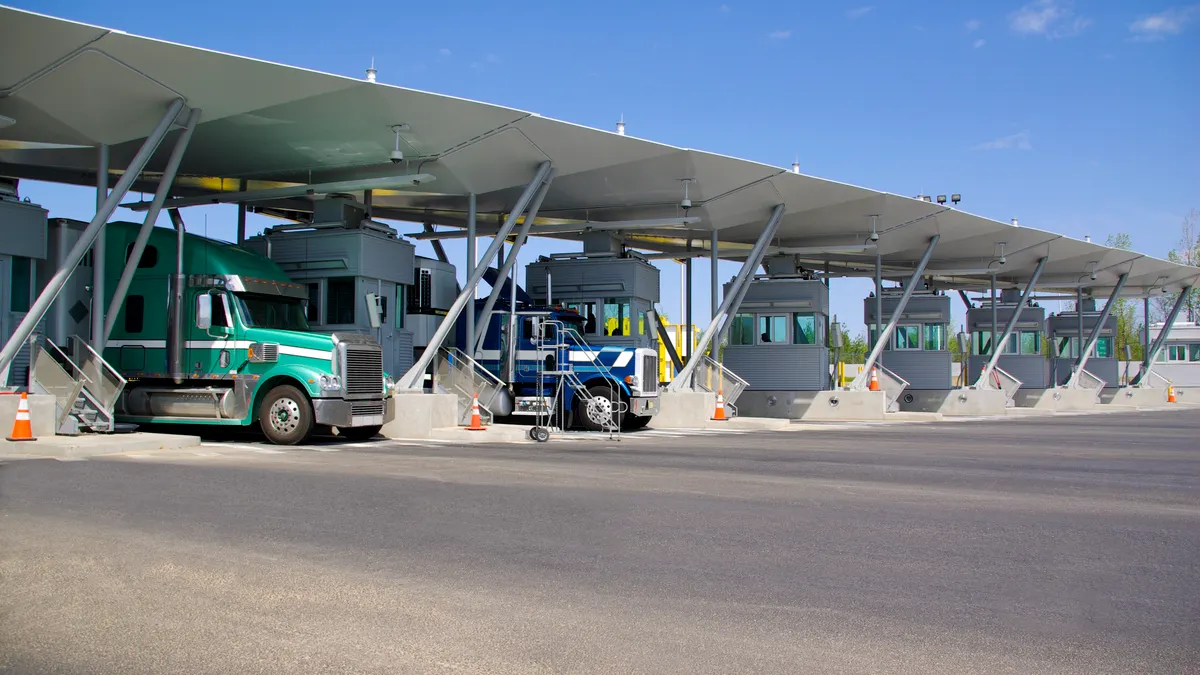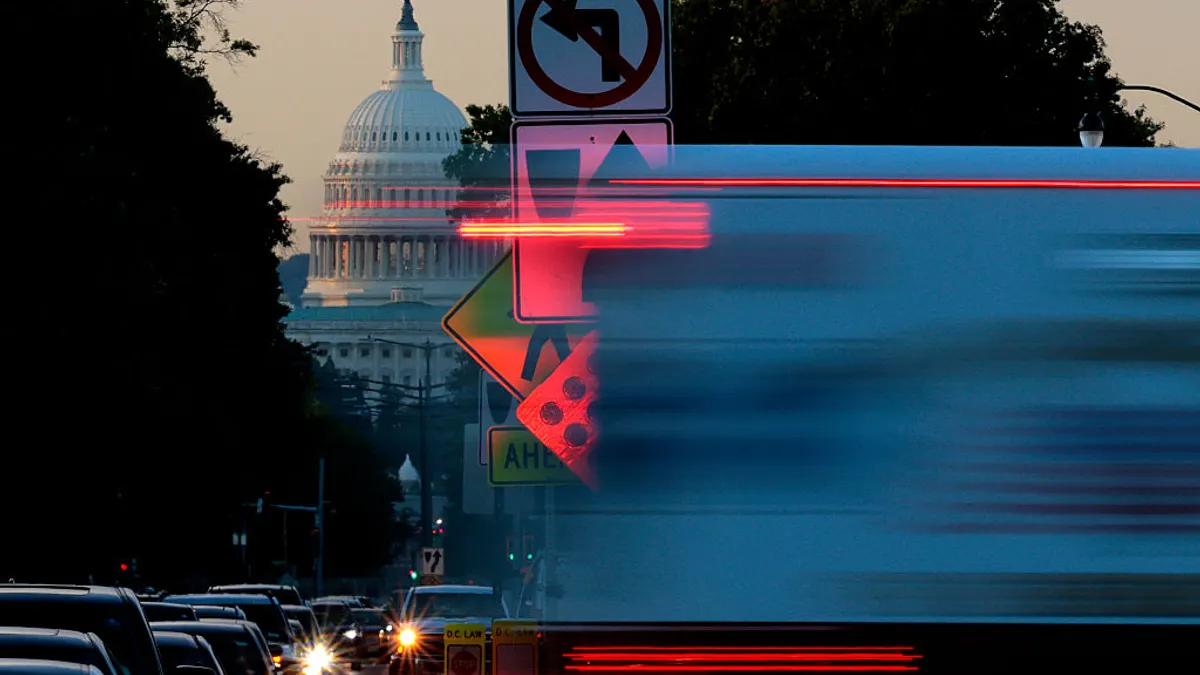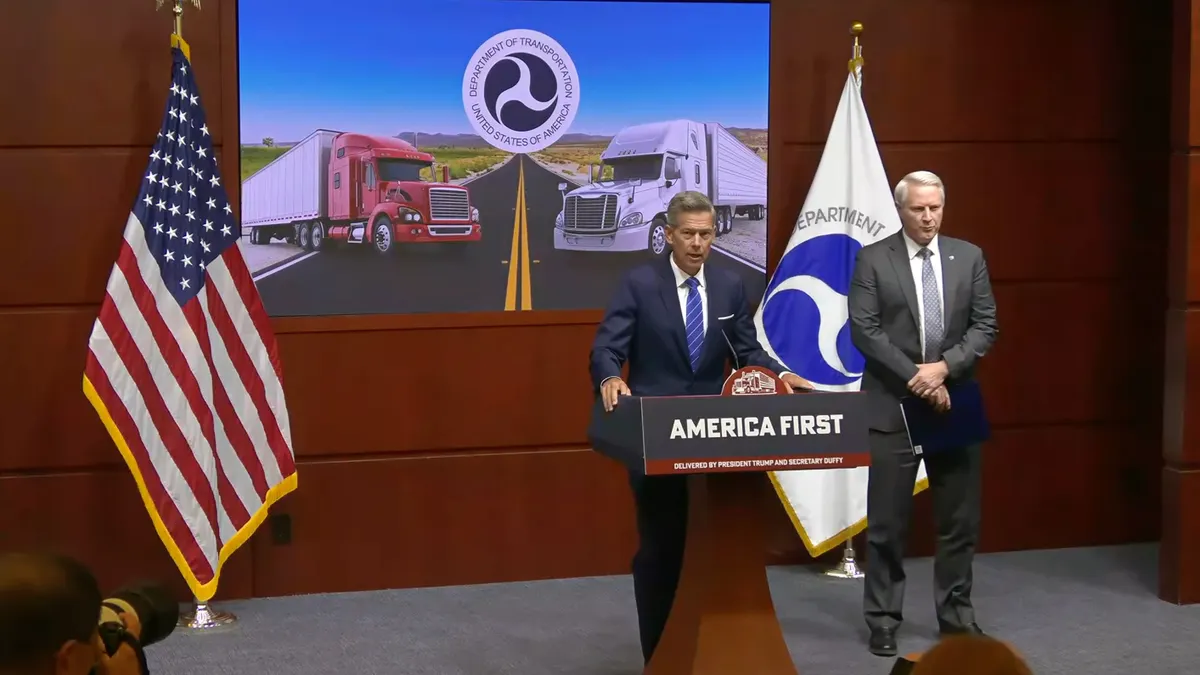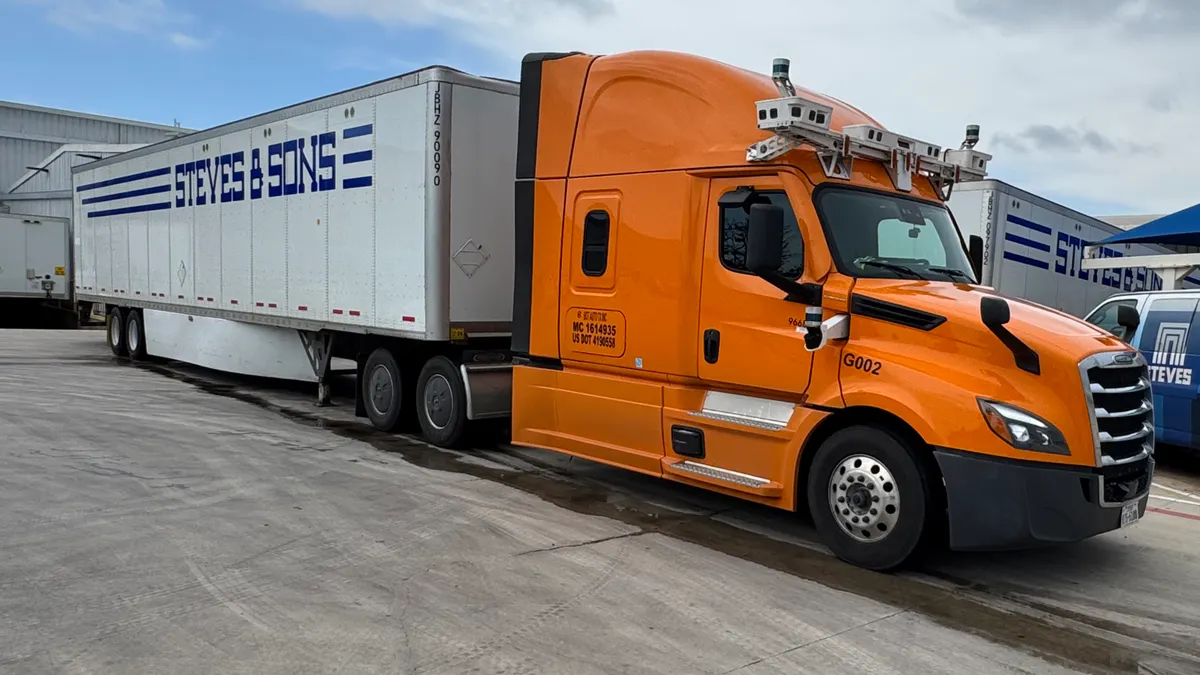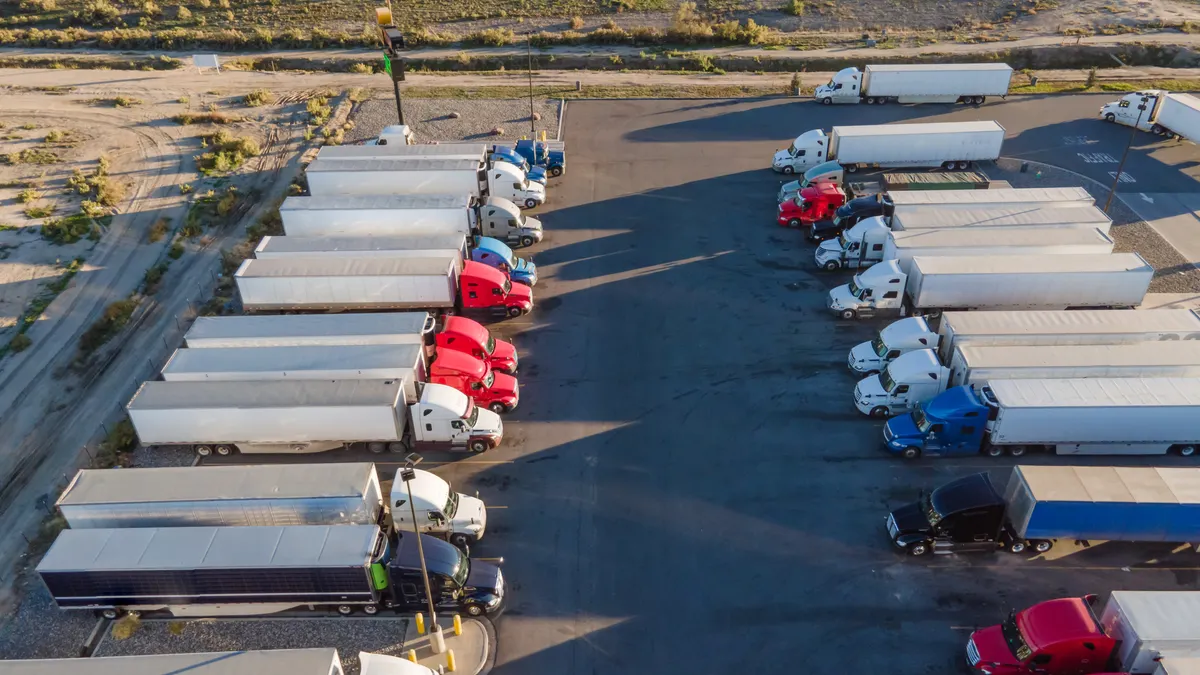The driver shortage, aggravated by the coronavirus pandemic, is reverberating throughout the trucking industry. The problem has reached the point where fleets are noting a shallower pool of independent drivers.
"The available pool of independent contractor drivers is smaller than it has been historically," Truckload carrier Marten Transport stated in its annual report, filed March 1 with the Securities and Exchange Commission.
In 2019, the American Trucking Associations put the overall shortage at 60,800 drivers, a 20% increase from 2017's estimate. But the ATA said it could not pinpoint the number of independent contractors the industry needed. The estimate includes independent and company drivers.
At issue now is whether the industry can absorb the demand coming its way as the economy strengthens, coronavirus restrictions ease, vaccine-related immunity takes effect and imports line up at the ports, waiting to be unloaded and shipped — all while drivers are in short supply.
On one hand, the organization that represents contractors, the Owner-Operator Independent Drivers Association, says demand, higher rates and higher pay will pull in the right number of drivers.
But fleets are not so sure.
"If we are unable to continue to attract drivers and contract with independent contractors, we could be required to continue adjusting our driver compensation package or let trucks sit idle," Marten officials said in the SEC filing.
The company has more than doubled its net income from 2016, to a reported $69.5 million in 2020, but "an increase in our expenses or in the number of tractors without drivers could materially and adversely affect our growth and profitability."
The market responds with new entrants
Representatives from the OOIDA said the market is responding to the signals from carriers in need of more contractors. They point to the fact that before 2020 ended, there was an "unprecedented surge" in FMCSA approvals for motor carrier authority status.
Avery Vise, FTR vice president of trucking, told Transport Dive in December that the surge from July through the end of November saw 31,000 entities obtain motor-carrier authority with the FMCSA. That compared to 30,500 registrations for all of 2015. There is no sign the trend is slowing, Vise said.
In 2020, FMCSA granted carrier authority to 57,978 entities, a 36% increase from 2019, Vise said.
"Through February, FMCSA granted authority to 12,469 trucking operations," Vise said in an email. "February's total was the second-highest ever after October 2020. Based on preliminary data that I track daily, March will surpass October to become the biggest month ever for new trucking companies getting authority."
Most of these carriers are independent drivers or owners of very small fleets, the exact type of contractor that Marten and other big carriers seek out to help their company drivers haul freight.
Independent drivers and small carriers enter the market
OOIDA, which is skeptical of claims of a truck driver shortage, said the numbers show demand being met.
"I don't necessarily think there's any shortage of independent contractors," said Lewie Pugh, OOIDA executive vice president and a former independent driver for Landstar.
OOIDA officials believe the pressure to attract more truckers, independent ones and company drivers, has caused fleet owners to weigh pay hikes and bonuses.
Publicly traded fleets, especially, do not like to be pressured on pay, said Mike Matousek, OOIDA director of government affairs. And a sure way to lower rates is to flood the market with new capacity.
"Trucking has historically always suffered from overcapacity," said Matousek. "Too many trucks, too many trailers."
That overcapacity came into play last spring, when after the initial panic buying wore off, spot rates plummeted. Many independent drivers found rates too low to drive. To protest the low spot rates, many drivers came to Washington, D.C., to demand more transparency from brokers.
Matousek said big carriers won't admit it, but when freight demands drop, company drivers keep driving, and independent drivers don't get loads — the first casualties of poor economics. It's for that reason, Matousek said, that the industry should stop griping about higher spot rates and let independent drivers recover from last spring.
"There should be no rush to knock these rates down," said Matousek.
Regulations afoot
Others in the industry wonder if the talk of more regulation has pushed drivers into the company ranks, meaning there are fewer independent contractors.
Democrats from California to Capitol Hill are wary of the gig economy's structures, which allow companies such as Uber and Lyft not to classify drivers as full-time employees. The Democrats would like to see such companies pay benefits, but those companies say they will not be able to afford ongoing operations if forced to operate as conventional employers.
Kathryn Pobre, manager of government affairs for the Truckload Carriers Association, said there could be uncertainty among drivers about California's AB5, signed into law, and the more recently proposed U.S. Protecting the Right to Organize Act, which passed the U.S. House of Representatives on March 9.
AB5 is temporarily suspended while the California Trucking Association, OOIDA and others fight in court.
"Trucking has historically always suffered from overcapacity. Too many trucks, too many trailers."

Mike Matousek
Director of government affairs at OOIDA
OOIDA noted in a court filing in May that as rates seesawed in the spring, owner-operators were able to keep agreements with shippers that kept them from having to idle their trucks because of poor rates. If independent drivers are forced to join company ranks, they would end up with no job or no benefits in such a scenario.
"Absent the current preliminary injunction, these truckers will be left with a Hobson's choice: abandon the unique opportunities provided by the owner-operator model, cease serving the California market to the detriment of their businesses and the goodwill they have cultivated, or simply cease to exist," OOIDA's amicus brief read.
Pobre notes the PRO Act would basically slash independent contracting too. The PRO Act faces a tougher fight in the Senate, but Pobre said TCA is not underestimating its chances in a Senate evenly divided among Republicans and Democrats.
"It's a big deal and we're certainly working on fighting it," said Pobre.
Matousek and Pugh said in the end, many drivers prefer to be independent because of promises as fleet drivers that higher pay is around the corner. When such pay does not materialize, the drivers look for other opportunities, creating the remarkably high turnover the industry is known for. Independent drivers then make the choice to go their own way and take a chance on spot rates and contractual work from shippers and fleets.
Pugh said he sees more independent contractors coming online, in the FMCSA numbers and in OOIDA's own ranks.
"Our numbers around here have doubled," said Pugh.




